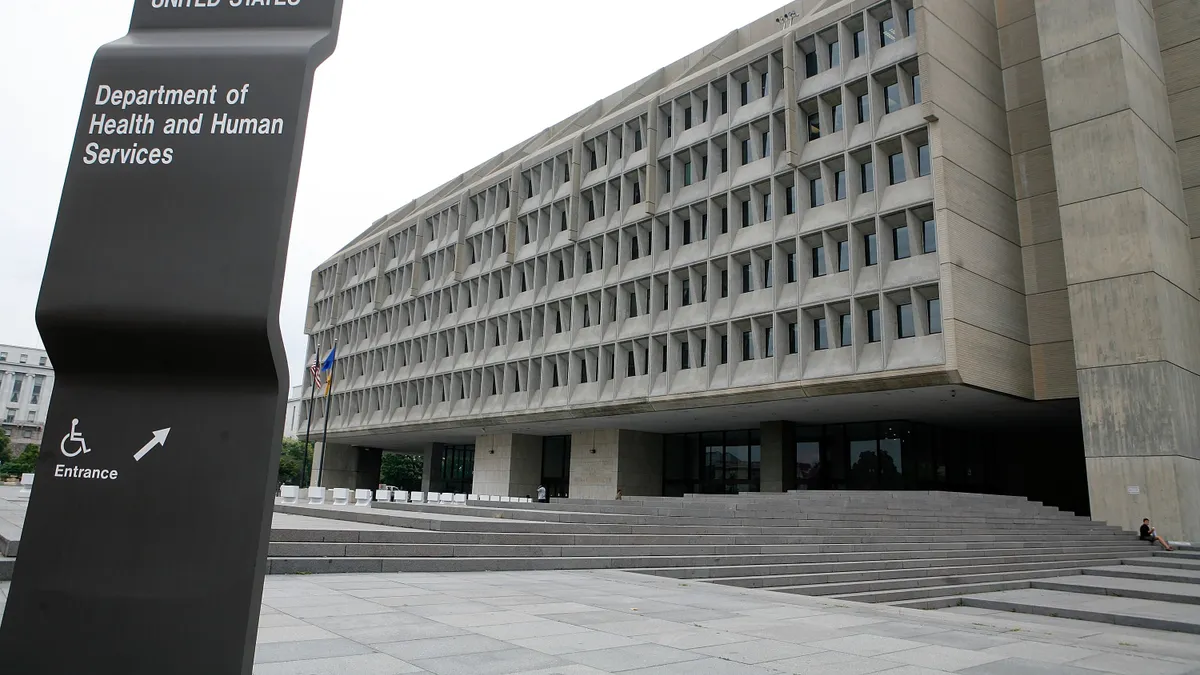States have until 2027 to implement work requirements in their Medicaid programs, so it might be tempting to wait for more guidance from the federal government before moving forward.
But states shouldn’t delay given the Herculean scale of the task, experts said Thursday during a meeting of the Medicaid and CHIP Payment and Access Commission, an influential group that advises Congress on Medicaid policy.
“Time is a-wasting already,” said Jessica Kahn, a partner at consultancy McKinsey who specializes in state Medicaid and social services programs.
Changes to Medicaid in the the GOP’s sweeping tax and policy law passed in July have been characterized as the greatest overhaul to the safety-net insurance program in its 60-year history.
Perhaps the most significant policy in the law is a mandate that adults log at least 80 hours of work, education or community service each month to remain enrolled in Medicaid. The work requirement will apply to people aged 19 to 64 to who are eligible for Medicaid under an expansion under the Affordable Care Act.
Currently, 40 states and Washington, D.C., have expanded their Medicaid populations to a greater share of low-income adults.
Work requirements are deeply controversial. The policies have been trialed in a small handful of states with little evidence of success: Historically, work requirements have resulted in eligible individuals losing the safety-net coverage because of issues documenting their compliance, with no corresponding uptick in employment.
Research also shows that the vast majority of Medicaid beneficiaries already work or would qualify for some of the exemptions in the law. As such, critics say the work requirements are a thinly veiled strategy to save the government money by booting eligible individuals off of Medicaid. The Congressional Budget Office, a nonpartisan scorekeeper, estimates that the work requirement will reduce federal spending by almost $330 billion over ten years, while causing millions of people to become uninsured.
“I’m just holding this tension that in this bill it’s a budget reducing initiative that’s substantial and it’s based on the assumption that there will be significant disenrollment... that will impact people who are eligible,” said MACPAC Commissioner Heidi Allen during the meeting. “How is that tension navigated?”
In the near-term, that tension will be navigated by states, which have fewer than two years to completely remake their data and eligibility systems, expand outreach and education and track compliance with work requirements — all with minimal funding from the federal government.
It’s a huge lift, state Medicaid directors and health policy experts say, and one complicated by a lack of clarity about key elements of the law. Still, states shouldn’t be dawdling.
“We’re all on the same timeline and working from the same information, which is the legislation,” said Melisa Byrd, Washington, D.C.’s Medicaid director. “I think we’re collectively trying to figure this out as we go.”
Unanswered questions
States are waiting for a rule that the CMS will publish by June 2026 giving more details on how to implement work requirements.
There’s so much states want the CMS to weigh in on, including guidance around beneficiary outreach; how Medicaid tweaks relate to other benefit programs like the Supplemental Nutrition Assistance Program; what will qualify a state for an implementation extension; and if regulators plan to track the impacts of work requirements nationally.
States also want the CMS to more precisely define exemptions to the work requirements. Individuals who are pregnant or postpartum, taking care of small children or “medically frail,” for example, won’t have to meet the mandates.
But some categories — especially the medically frail designation — have a lot of gray area, panelists said.
“[States are] feeling very pressed for time and waiting on answers for how to define medically frail. We sit with that question,” said Jennifer Strohecker, Utah’s Medicaid director, during the MACPAC meeting.
Strohecker gave the example of a patient with diabetes who may have their condition in check when taking insulin, but could degrade into severe neuropathy or vision impairment if they stop taking the drug. At what point would they qualify?
“For us to wait to understand what medically frail might mean and if we have flexibility in defining that or not will not serve us well, or serve our members well, when it comes down to really going live with this,” Strohecker said.
Another open question is whether the CMS will allow states to approve exemptions based on self-attestation, especially for health-related categories that can’t easily be tracked.
States also want to know how and when the CMS plans to divvy out funding to help them implement work requirements. The law allocates $200 million in 2026 funding for states — breaking down to roughly $4 million per state.
But costs for Medicaid work requirements often exceed the amount states have been allocated to put them in place, said Melinda Becker Roach, a principal analyst with MACPAC. And Medicaid is already a source of serious financial pressure — the program accounts for roughly 30% of state budgets.
As a result, it would be “extraordinarily helpful” for states to know sooner rather than later when funding will be made available and how to access it, Byrd said.
“We all at the state level have processes to work through. For example, we need budget authority if we’re going to spend any money. And most states’ fiscal year [2026] budgets were already finalized... which means we could get the money today but we can’t spend it today,” Byrd said. “Given the timeline of go-live for next year, any little delay in time like that is impactful.”
Early days
States are approaching implementation from different starting lines. More than half of states seem to be unprepared, according to a recent analysis from the Georgetown McCourt School of Public Policy.
Medicaid directors for Utah and D.C. said they’re currently working to sketch out internal governance and structures, and thinking about how to build processes to minimize coverage interruptions.
States should move immediately to modernize their data systems, if they haven’t already, McKinsey’s Kahn recommended.
“No state needs to be waiting for CMS guidance to be doing their IT systems planning,” Kahn said.
Many state Medicaid systems today are a patchwork of vendors and capabilities not designed to pull and track data from disparate sources — a capability at the core of tracking compliance with work requirements and ensuring people aren’t improperly disenrolled, she said.
For example, Georgia — currently the only state to have a live work requirements program — has seen enrollment fall well short of expectations, in part due to issues with the state’s portal that processes Medicaid applications.
“It hasn’t been as successful as we would like it to be,” said Deanna Williams, an enrollment assister with health advocacy group Georgians for a Healthy Future.
Before the portal was updated this spring, it frequently crashed when people tried to submit applications, didn’t work on smartphones and required documents to be uploaded in certain formats, according to Williams.
“It wasn’t that the client does not work, or doesn’t have proof of their income — they were just having issues uploading the documents to verify their income. Which, if not provided within a timely manner, could lead to your application being denied,” she said.
It’s still early days, but states are trying to build IT systems that can prevent that, speakers said. Utah, for example, is connecting its Medicaid department with the state’s higher education database, so it can more easily track education hours for beneficiaries, Strohecker said.
Georgia’s Williams recommended that states also start to think about partnerships with trusted community groups for member outreach and education, including health centers, churches, schools and libraries.
Communications about Medicaid changes should be repeated frequently and across multiple platforms, like in-person, email, text messages and phone calls, she said.
States are juggling the allocation of already tight resources. Strohecker said that Utah is planning to hire some additional staff to help with eligibility oversight, but is mostly making do with what it already has.
“There are lots of things we might want to do, but there are many things we have to do. And if we’re going to do them well we have to align our existing staff and resources behind those,” she said, adding later: “Time is of the essence.”





















